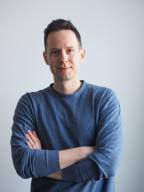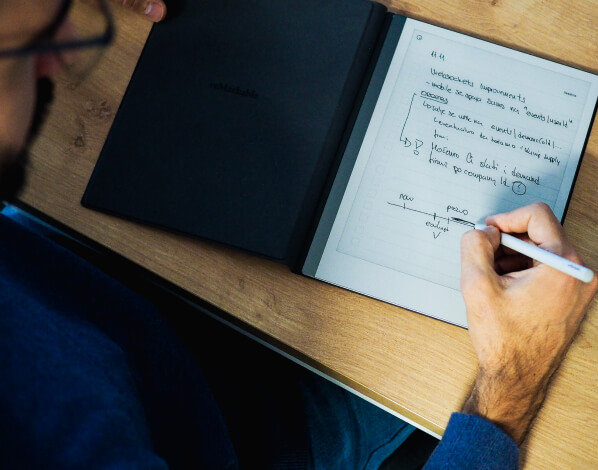Rethinking our design team structure
Rethinking our design team structure
Discover how our co-founder, Marko, devised a comprehensive strategy to create a hybrid model that provided bespoke support to each venture, all while maintaining flexibility. This article will show you how we mapped out our design structure and the significant impact it had on our ventures and the overall success.
Looking back on our earlier years, we can see how our design team structure was suited to the needs of our product teams at the time. We hired seasoned product designers who were integrated fully into the product teams they were assigned to. Each product team had one product designer who was primarily focused on UX/UI and Research, with less attention paid to visual design or branding. But times change, and as we shifted from a Product Studio to a Venture Studio, we also needed to rethink how we structure our design team to support this model.
In this article, we will discuss the challenges we faced with our initial decentralized design structure, how we approached the restructuring, and how we implemented our hybrid design structure. We will also explore the results of this restructuring, including the impact it had on our ventures and the success of our studio as a whole.
The business model shift
As a new venture studio, we found ourselves facing a design team structure that was no longer effective for our evolving business model. In our earlier days, we operated as a Product Studio, and our Design team was set up as a decentralized structure consisting of product designers who focused on improving the UI/UX of a single product.
At the same time, we set up an internal product marketing team that could assist with venture validation processes and various internal needs. We also realized the need for a design team that could provide specialized support to each venture in multiple disciplines. This team comprised experienced designers with diverse skill sets, including branding, visual design, and research.
As a team at that time, we had combined know-how of all those diverse skills needed to plan such activities into our workload. But, such an approach often resulted in our product designers being pulled away from their primary focus on product design to work on other tasks across multiple design disciplines, leading to an imbalance in their workload and a decline in their productivity.
To address these challenges, we needed to restructure our design team into a hybrid model that would provide specialized support for each venture while maintaining flexibility and adaptability, which are essential to the success of a venture studio. So we started exploring various design models by blueprinting our current structure and identifying our strengths and weaknesses.
For reference, here’s what our decentralized (or often called Pod) structure looked like:
As a Product Studio, we mostly needed UI/UX/Research in our toolkit and each designer worked particularly on one product (or venture) at that time. It became apparent that we needed to fill in the gaps in other design disciplines.
But there were some obvious challenges that we identified with our current setup:
Product designers were most efficient (and happy) designing long-term, fully setup products, doing deep dives, and improving a defined product
Product designers are (in general) less inclined to do experiments, tests, and prototypes on less-defined products in the early phase
Product designers (in general) lack the skill of more advanced visual design or are not interested in doing it often
Knowing what we had on our agenda as a venture builder, we needed to provide a structure where our existing product designers could be attributed long-term within point 1. (because we concluded that mixing them into 2. and 3. territory would not be feasible in the long term). So we opted to hire new roles to compensate for our weaknesses, but we needed to figure out how to create a new structure incorporating such roles in the long term.
Mapping out our design team structure
As a starting point, we created a chart that visually represents most design disciplines, starting from data-driven disciplines to creative disciplines (left to right):
In order to make it even more visual, we’ve split and highlighted those fields. Noteworthily, this is by far not the most accurate segmentation as a lot of disciplines overlap but it serves as a starting point.
To get a better understanding of our current situation, apart from mapping out our team structure, we needed to map out our current skill structure as well. To do that, we used skill mapping letter metaphors that describe our team members' skill charts in the form of letters. This approach dated back to the 80s and was first introduced by McKinsey & Company and later on widely popularized by Tim Brown from IDEO.
The idea behind this approach is simple: it's a visual map of one's cross-discipline and deep discipline knowledge that combined, forms a letter. We used this approach specifically to visually overlap our current setup with our needs and identify where we have the most significant gaps and what skills we need to compensate for those.
As we mapped out our current structure using our new model, we concluded that our current team covers the following disciplines:
The gaps were, of course, immediately visible. Truth be told, it's never black & white - although those gaps were more than obvious, some of our team members had expertise in those areas, but in favor of their career progression, we concluded not to map areas that were not in line with skills that are not of their focal interest anymore. This was an important factor because we decided not to rely on what we can do at this moment, but also on where we wish to position our current team members in the future so that we can scale.
Mapping out how our ideal setup should look, we've come up with the following:
Upon analyzing it, it became obvious that we needed a more diverse team, and more importantly, a team that was willing to take on specific disciplines and grow within them. In addition, we’ve used this chart to map out our current design team disciplines. It was no surprise that we were understaffed on data and creativity.
Our need quite obviously was the following:
This information pushed us into rethinking our current structure based on data, and not only on gut feeling. We concluded that we need to split the design team into areas of expertise that align more with the types of designers that we want to hire and create specific environments for them to operate in. Such environments should differentiate based on factors like:
focus on multiple or single ventures (focus shifting ability)
depth of execution (high-level MVPs or Product deep dives)
design discipline focus (ranging from creative design to research/data)
Defining a new structure
To be able to comprehend this newly obtained data and define a new structure, let's recap our main premise of how a venture is built.
It all starts with the idea that needs to be validated. This is usually done within UX (and our Marketing department), which starts with our Proof of Concept Checklist that typically involves aspects of market research and business modeling. This needs to be executed fast, on a high level, and, if concluded to continue with the idea, pushed onwards to the validation phase.
At this point, we'll need some basic brand CI (in conjunction with brand images, ads, etc.) - think of it as providing the idea with a face. This will be taken care of within our Visual squad that tightly collaborates with UX and Marketing in order to create a brand that corresponds to our Research and desired communication.
In parallel, our Digital squad would serve as our faced-paced MVP team that uses rapid prototyping or no-code (sometimes low-code) to create a basic product that mimics the real one in order to validate the idea fast with real users.
Fast forward to the moment when the idea is validated, and we decide to create a real product out of it - we push it forward to our Product squad. Once there, the idea (or product) will enter a different environment, and more attention will be channeled onto deeper aspects of the product.
To complete the circle, the Product and UX work tightly together as UX can support them in arranging user tests and Research. In that matter, UX serves as a complementary squad that supports others rather than being solely single-product focused as the Product squads.
Based upon those insights, we've started to map out a new design matrix that incorporates all of those areas and defines how to execute within each. Those environments (we also might refer to them as squads) have been defined as Creative, Digital, Product, and UX.
So, now that we have identified what our ideal structure could look like, we could do a bit deeper and define what kind of environment each squad operates in and what type of skillset we need to match it to. Keeping such process in mind, we can conclude that our new team setup will consist of the following squads that execute within different environment attributes:
UX:
focus on multiple ventures
high level of depth
UX/research/strategy/data skillset
Creative:
focus on multiple ventures
low to medium level of depth
visual/creative skillset
Digital:
focus on multiple ventures
low to medium level of depth
digital/prototyping/UI skillset
Product:
focus on a single venture
high level of depth
product skillset
As we gained clarity with our new matrix, we could easily define how to move forward. Most of the current Product Design team was naturally assigned to the Product squad, while one member with extensive UX/research affinities was assigned to our UX squad. We also had much more clarity on how to hire for our Visual and Digital positions - a task that we executed swiftly as well and, in doing so, filled all of our gaps.
Noteworthy, having such a matrix beforehand during hiring made our process and role positioning much more transparent, and we were able to hire with much greater precision, eliminating candidates who concluded that this setup was not what they were searching for while attracting ones that discovered great opportunity and fit within such a setup. Gaining more transparency helped us hire suitable candidates and set the course for a more transparent career development plan while providing a clear blueprint of their responsibilities and working environments.
Should you rethink your design team structure?
It depends. Our design team restructuring was initiated mainly through our business model change and a gap in disciplines resulting from it. We encourage you to use this as a blueprint that can help you think strategically about such decisions and provide you with a bit of high-level information on how to make your own matrix that works best for your needs. As for us, it was a logical evolvement for our team structure, and we're positive about how it enabled us to create new ventures more efficiently.
Related mantras
Join us!
Like what you’ve read? Check out our open positions and join the Martian team!
See openings
